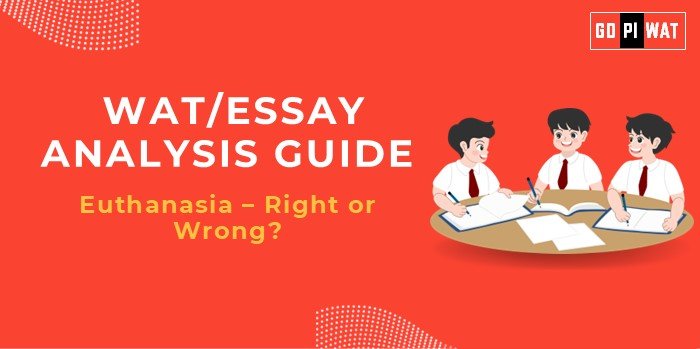📋 WAT/Essay Analysis Guide: Euthanasia – Right or Wrong?
🌐 Understanding Euthanasia’s Importance
Euthanasia tests the balance between compassion and societal ethics. For B-school students, it illustrates the challenges of policy-making, ethical dilemmas, and human impact.
🖊️ Effective Planning and Writing
- Time Allocation: Planning: 5 minutes | Writing: 20 minutes | Review: 5 minutes.
- Preparation Tips: Note key statistics, ethical arguments, and case studies.
💡 Introduction Techniques
- Contrast: “While euthanasia offers relief to the suffering, it challenges societal ethics on the sanctity of life.”
- Timeline: “From ancient debates to modern legalization in 15 countries, euthanasia remains contentious.”
📖 Structuring the Essay Body
✨ Achievements:
- 🤝 Autonomy Promotion: For example, Dutch regulation highlights respect for individual choices.
- 🩺 Improvement in End-of-Life Care Discussions: Encourages open dialogues on patient preferences.
⚠️ Challenges with Comparative Analysis:
- ❓ Misuse Risks: Critics cite slippery slopes, where euthanasia might be applied without proper justification.
- 🌍 Uneven Access to Palliative Care: Many countries struggle to provide equitable end-of-life care.
🔮 Future Outlook:
- 📜 Enhanced Global Policy Frameworks: Building consistent regulations across nations.
- 🔒 Integration of Ethical Safeguards with Autonomy: Balancing individual rights with societal ethics.
✅ Concluding Effectively
- Balanced Conclusion: “While euthanasia respects autonomy, robust safeguards are crucial to uphold ethical principles.”
- Global Comparison: “Lessons from the Netherlands and Canada highlight pathways for effective implementation.”
📄 Sample Short Essays
⚖️ Balanced Perspective:
Euthanasia, though compassionate, raises ethical challenges. Countries like the Netherlands show its potential, but global safeguards remain crucial.
🔍 Solution-Oriented:
Legalizing euthanasia must ensure safeguards to protect vulnerable individuals while respecting autonomy.
🌍 Global Comparison:
Euthanasia’s regulation in Canada and the Netherlands offers models for balancing individual rights with societal ethics.


